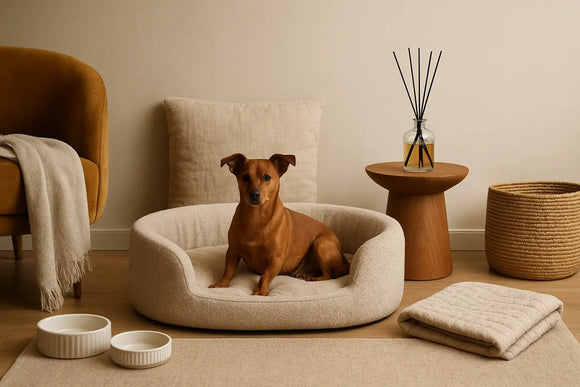
How to choose a leash
Adelchi Rainone
The leash, together with the collar, is an essential tool for taking the dog out for a walk or to do his business. But how to choose the most suitable one among the many available? This little guide will help you understand something.
The leash, together with the collar, is an essential tool for taking the dog out for a walk or to do his business.
However, it is not easy to choose the most suitable one among the many available. Just considering the materials we are faced with a vast choice: nylon, rope, chain, leather, ... Not to mention the sizes: short, long, extendable and extensible. How to choose the most suitable one for our dog?
What material?
Much depends on the age and size of the dog. Puppies and small dogs can be safely kept on a soft leash made of rope, fabric or light chain. It is better to keep larger dogs on resistant leashes that do not break easily and that do not prove dangerous for those who handle them. Nylon ones, for example, can hurt if you suddenly grab them with your bare hands when they are under maximum tension.
We must then consider practicality (nylon, for example, allows the leash to be rewound with minimal bulk when not in use) and manageability (leather allows for safer grips for the handler, while nylon can lead to not holding correctly the leash, with the hand inserted completely into the handle and the palm gripping the emerging end).
What size?
The ideal minimum length for a leash is 120 cm because it allows the handler to carry even small dogs or puppies without having to bend and gives the dogs a good margin of movement. With animals that have a higher height at the withers, shorter leashes can also be used, but they are less practical, especially if it is the only leash you have.
In fact, the ideal would be to have at least two leashes. An extra security in case one breaks down suddenly, at the least opportune moment. And then they would allow us to have leashes of different sizes, depending on the purpose of the walk with our dog.
Alternatively you can opt for variable size leashes. Indeed, they exist
Extendable leashes: made of nylon or leather, it is a leash equipped with two snap-hooks and two or three metal rings which serve to attach the second snap-hook so that the maximum length increases. They are mainly used in training, but it could be an excellent alternative to have in a single leash the most suitable tool for the purpose of the walk with our dog or the circumstances in which we may find ourselves with him.
Extendable leashes: made of rope or nylon, they are equipped with a spring device that automatically rewinds the leash up to ten meters long, depending on the type and size of the dog for which it is intended. They allow the dog to move very freely by stretching when the dog moves away from the owner or recoiling when he approaches. And it can be locked to fixed lengths at any time, as needed. However, they are not recommended as the only leash for daily outings. Meanwhile, there is an Ordinance of 3 March 2009 of the Ministry of Labour, Health and Social Policies, dated 3 March 2009, which sets the maximum length of the leash accepted in public places at 1.50 metres. It is therefore no longer possible to use leashes that can be extended to sizes larger than these. Although the most effective tool in this sense remains training the dog in the commands "stay" and "come" which in such situations would allow him to be left completely free, without risks for him and certain of being able to block or recall them at the right time.
Maintenance first
Whatever the material, length or number of leashes you decide to purchase, remember to always check the perfect integrity of the carabiners, rings and junction points. And if something is wrong, don't hesitate to replace it before it breaks at the most inconvenient time.











